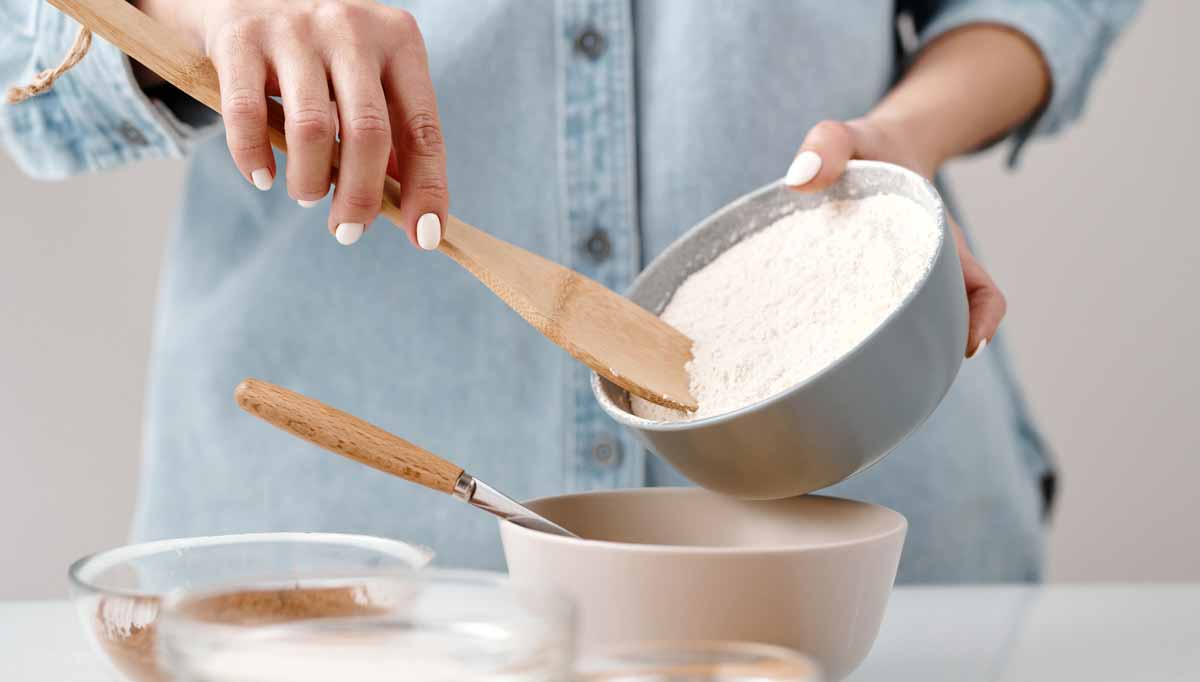
Known by different names, natural yeast (Levain) is produced from the simple mixture of water and flour. It is widely used for the preparation of naturally fermented bread.
The dough is composed of a culture of yeasts: brewer’s yeast Saccharomyces cerevisiae in its wild state, combined with lactobacilli that maintain the acidity and prevent other unwanted bacteria from developing.
Check out the step by step of the recipe.
Ingredients
1/2 teaspoon of honey or sweet fruit juice + 100 g of warm water
100 g of fine rye flour
600 g of wheat flour divided into 3 portions of 200 g each
600 g of water at 30ºC
Preparation
day 0
Dissolve the honey in warm water. Add the rye flour and mix until forming a paste. Place in a container and cover with a cloth. The container should not be sealed, just covered so that the dough is protected, but in contact with the environment. Allow to ferment for 24h at room temperature, about 25°C. At the beginning of natural fermentation, there are only the microorganisms of the flour. The addition of honey or fruit juice will facilitate fermentation. After 24h, the dough will already present some gas bubbles and a slight acidity. Water will be fully integrated into the dough.
day 1
Check if the dough contains air bubbles. If so, the dough is ready to be fed and will be called “starter” or levain chef. This is the first refeeding of the dough. Set aside 200 g of starter (the dough from day 0) and add 200 g of wheat flour and 200 ml of warm water (30°C). Mix everything and cover the container, without sealing. Allow to ferment for 24h at room temperature.
day 2
It’s time to feed the dough again. This is the second refeeding. Set aside 200 g of starter (the fermented dough from the previous day) and add 200 g of wheat flour and 200 ml of warm water (30°C). Mix everything and cover the container, without sealing. Allow to ferment for 24h at room temperature. At this point, the lactic bacteria are at their maximum growth. Acidity comes with a small lag compared to the growth of bacteria, but already increases noticeably. Wild yeasts can’t grow to their maximum in this environment. The dough begins to swell mainly due to alcoholic fermentation and begins to crack the surface. The smell of acidity and gases are signs of life in the dough.
day 3
At this point, the dough increases in volume. Feeding needs to continue. This is the third refeeding. Set aside 200 g of starter (the fermented dough from the previous day) and add 200 g of wheat flour and 200 ml of warm water (30°C). Mix everything and cover the container, without sealing. Allow to ferment for 24h at room temperature. Lactic bacteria and yeasts are still not stable.
day 4
It is no longer necessary to feed the dough, just let it ferment for another 24h to check if it is spongy and aerated. These signs show that the levain is capable of fermenting a dough of bread. The balance of microorganisms in the dough continues to occur. The selection of lactobacilli will still occur. The important part is the balance between lactobacilli and yeasts.
day 5
The natural fermentation starter is ready to be used in your bread recipe or can be refed to be used later.
yield about 1.5 kg of yeast
preparation 6 days
execution moderate

